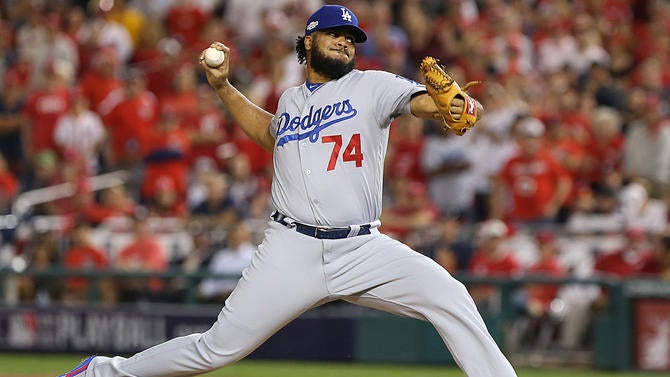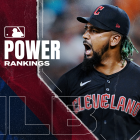Over the weekend, the Cardinals signed left-handed reliever Brett Cecil to a surprising four-year deal worth more than $30 million. That contract inspired curiosity; if a good setup man is receiving so much, then how rich are the elite closers -- Aroldis Chapman, Kenley Jansen and Mark Melancon -- about to become?
We don't have an answer yet, and won't for a little longer. But we can focus our sights on those closers in another respect, homing in on what makes each special and effective. We'll go in alphabetical order.

Chapman isn't yet 29 years old, but he has staked a claim as the best closer of his generation. In six-plus seasons, he has tallied a 2.08 ERA (good for a 192 ERA+) and a 3.68 strikeout-to-walk ratio (fueled by more than 15 strikeouts per nine), all the while converting on 90 percent of his save chances. The main knock on him is his involvement in a domestic dispute last offseason -- in which he admitted to firing his gun six times following an argument with his child's mother. Chapman has since served a 30-game suspension and stayed out of headlines, but that and his aloof attempts at remorse make him a difficult figure to embrace.
On the mound, Chapman remains dynamic. He has absurd flexibility, which allows him to contort his body in a way to achieve maximum kinetic potential -- the separation he creates between his top and lower halves permit the otherworldly velocity figures. Chapman averaged 101 mph on his fastball in 2016 -- the kind of velocity that causes batters to refrain, "Hm, that's not a rabbit" as the ball hops over their bats. He also threw more strikes than normal last season.
Were it not for Chapman the human being, Chapman would be the perfect free-agent reliever: He's on the right side of 30; he's accomplished to an unfathomable degree; and he's blessed with the kind of generational talent that makes a lengthy, Hall of Fame-caliber career possible. You can't separate the person from the pitcher, however, and that might (and probably should) give some teams pause.
Jansen is a year older than Chapman and lacks Chapman's velocity. (Then again, he also lacks the character problems.) Yet that doesn't make him a slouch by any means. His career 2.20 ERA translates to a 169 ERA+, and his 5.31 strikeout-to-walk ratio is a fair bit better than Chapman's mark.
Jansen elicits Mariano Rivera comparisons for two reasons: One, he leans heavily upon his cutter; two, he throws an almost unimaginable amount of strikes. More than 88 percent of his 2016 pitches were cut, while a career-high 72.7 percent went for strikes. Basically, Jansen spams batters with the same pitch over and over, all in the zone, and there's nothing they can do about it. Last season, the opposition hit .153 when they were able to put the cutter into play.
There are easy outs, and then there are easy outs and Jansen deals in the latter. He consistently coerces a high amount of infield flies (more than 25 percent of his total flyballs in 2015, per Baseball Reference), and he has flirted with a 40 percent strikeout rate throughout his career. There isn't much hope for the opposition when that many of their at-bats end in an automatic out.
Jansen doesn't have Rivera's postseason mystique -- though his three perfect innings of work in NLCS Game 6 were impressive -- but that's the thing: If a reliever comes up short only when he's being compared to Rivera or Chapman, then you know he's elite. Expect Jansen to receive a matching payday.
Then there's Melancon, the oddball of the trio.
Melancon is older than either Chapman or Jansen (which is to say he's nearing his 32nd birthday) and is less of a household name. His career hasn't always been golden, and there was a point in early 2015 where it appeared he was headed toward oblivion. Yet Melancon has since turned it around, running his four-year totals to a 1.80 ERA (a 212 ERA+) and a 5.96 strikeout-to-walk ratio. The sample size isn't as impressive as it is with Chapman and Jansen, but those figures are ridiculous all the same.
Melancon is the outlier on the mound, too. He doesn't throw that hard (low 90s), and unlike the others, he has to rely upon a pair of pitches: his cutter and a knuckle curve he throws more than a quarter of the time. Melancon follows the boring formula of throwing quality strikes and generating ground balls; he's dependent more so on location than domination, though it has worked out swell for him, thanks for asking.
Because of Melancon's age and style, he's likely to receive the shortest and least-lucrative deal of the three. Nonetheless, there's reason to believe he has another couple years remaining as a front-end closer.
























